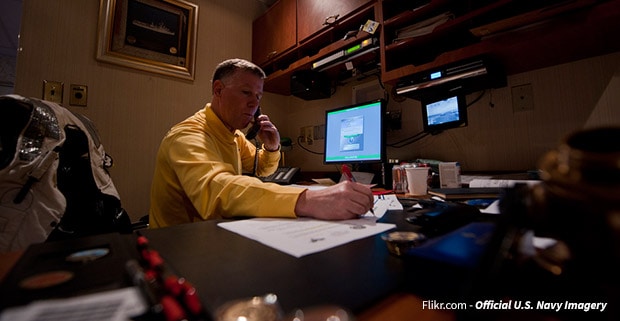Storytelling is pretty much in our genes. We have been doing it for centuries as a way to hand down traditions, teach lessons, pass down language and so much more. We learn through a well-crafted, and most importantly, well-delivered, narrative.
It is important that you stay conversational and natural. You don’t want it to sound rehearsed – you aren’t giving a speech.
So, what better way to connect with an interviewer than to use storytelling? Its benefits are really two-fold. First, it obviously is a great way to discuss your background and how your skills fit a certain job.
“The purpose of telling stories is to get you to talk about your most memorable accomplishments, biggest challenges, the ways you deal with conflict, and how you recover from a stumble,” says author Marc Miller, in Add Storytelling to the Interview Process.
Second, it gives you a chance to showcase your personality. This is something that you can’t fake, and, according to recruiter Sandy Khan, in the end, recruiters are hiring on personality.
“You can’t fake this – there’s no point in even trying. The only thing you can do is to make sure that you’re authentic in your interview. Authenticity comes from being humble, so humility is a big leadership trait that we look for. If you are self-aware and know the areas where you need self-development, a lot of hiring managers will pick up on that. You cannot be a star from day one. They will also want to know that you will take ownership of your own career development,” she relates in How Storytelling can get you the Job you Want.
The best way to tell a story is to set it up in three simple steps, relates Miller.
- Clearly state the problem
- Describe how you solved the problem
- Describe the outcome
The best part is this easy equation can be applied to almost any question that an interviewer throws at you. Many interviewers come prepared with a set of questions, but there is a lot of room for you to put a storytelling spin on it. Let’s take a look at where Miller suggests getting good story material.
The responsibility section of the job description:
Tell a story that demonstrates your skills and experiences for each responsibility that you have performed. It is important that you stay conversational and natural. You don’t want it to sound rehearsed – you aren’t giving a speech.
If you don’t have experience with a specific responsibility, don’t worry. Just discuss a situation where you performed a similar responsibility. “Start the story out by saying: I have not been in that exact situation, but let me tell you about the time I did something similar!” suggests Miller.
Standard interview questions:
Know them, live them, love them. These are the questions that come up all the time, and you can apply the storytelling principles to them, as well. Here’s a list of some of the most common that you will run into on your interviews.
Rehearse, rehearse, rehearse:
Sound natural and conversational … by rehearsing like crazy! Rehearse in front of a mirror so you can pay attention to your facial expressions. You definitely want to smile, keep your face relaxed and try to mimic a conversation as much as possible; while a job interview feels like serious business, you don’t want to give away how nervous you feel. Remember, you want your personality to shine through. During your interview, if you stumble on a question, or draw a blank, take a deep breath, and repeat the question to get your bearings before you dive in.
